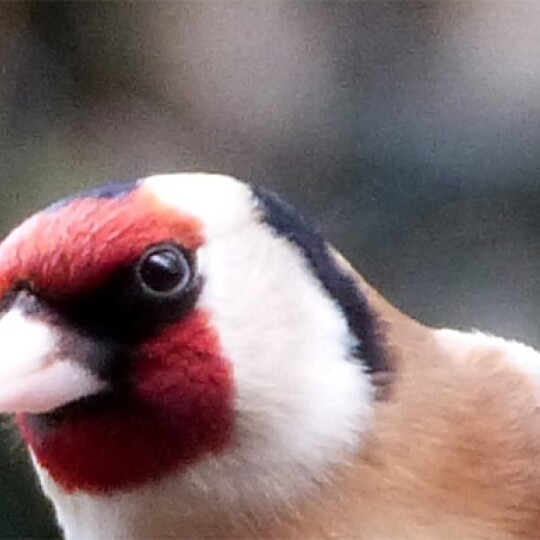Goldfinches have been back in the garden as it gets colder [if not quite in time for the Big Garden birdwatch this year..]. These brightly coloured birds are a sight to see and very photogenic.
A charm?
They can be grumpy little creatures, so you might be wondering why their group name is a ‘charm’?
Charm is from the old English c’irm, describing the birds’ twittering song - not their personalities..! They can barely feed happily with each other and attempt to chase off other birds.
Goldfinches in art.
The European goldfinch is present in painting and literature dating back to the early Middle Ages. Many painters from the Medieval and Renaissance periods, including Giotto, Botticelli and Da Vinci, portrayed the goldfinch in paintings depicting Madonna and Child.
Attracting birds to your garden.
When to feed? We feed all year round, as the birds can come to relay on this. In our current garden we have at least 4 generations of birds that have only known this food being available year-round, (some species, including goldfinches, have more than one brood a year).
Winter feeding gives birds a great boost. Especially in snowy weather when there are fewer insects about & the snow can cover natural food sources.
What to feed?
Some birds will eat happily from feeders. Dunnocks, Chaffinches & thrushes, including Blackbirds, are more traditionally ground-feeding birds. Chaffinches are very communal. We've seen one sat on a feeder, shoveling out seed to other waiting Chaffinches below.
Avoid high wheat content. Smaller birds aren't that interested. Unless you have pheasants or other game birds visiting, you risk having a lot of waste and potentially attracting rodents..
Smaller spaces or on a budget? If you only have space for one feeder, then you might want to consider a seed mix to get a range of birds feeding. There are various mixes available or you can mix your own, using oats & various grains.
On a budget? Consider a wild/song bird mix & try adding extras to interest your birds. Sunflower hearts are popular and don't leave husks on the ground. Mealworms and suet pellets are also extras that your birds will enjoy.
If you have the space, it can be useful to have a selection of feeding areas in the garden. Different areas can give space for different family groups to eat.
We put out a range of foods for our feathered visitors: seed mix, (with extras) peanuts, niger seed, plus suet balls & blocks - NOTE we use the suet in feeders. Netted fat or suet balls can result in birds getting tangled & hurt.
You can also make your own suet mix, re-filling coconut halves or shaping as you require.
Don't forget to put out water.
Relatively shallow is good, so a medium plant saucer works well if you haven't got space for a birdbath.
Favourite foods?
Goldfinches are seed eaters, thistle finch being one old name for them. If you want to attract them to your garden or space, Niger seed is popular with finches and those sunflower hearts are a firm favourite!
Most birds like seed mixes & peanuts, from Tits to Robins and Nuthatches to Blackbirds.
Suet is a high-energy food, especially valuable in cold weather.. Apart from the more usual birds on these feeders, Chaffinches, Dunnocks, Robins & Blackbirds, all traditionally ground feeding birds) have all been spotted learning to balance, so they can access this food too!
The first pair of Greater spotted Woodpeckers we saw in our garden, 10 years ago, were attracted by fat balls. They continued to visit, munching on peanuts when the weather grew warmer. In the spring they also brought their chick & we got to see him grow up through the seasons.
DO AVOID - Putting out loose peanuts in spring. This is the birds' breeding season and whole peanuts are a choking hazard for young birds. Kibbled peanuts are better if not using peanut feeders. If your peanut feeder has a hole at the bottom [both Woodpeckers & squirrels can bend the wire out of shape] then give it a re-furb before the spring.
Hygiene - It’s important to clean your feeders occasionally.
This can help stop transmission of disease & keep your feathered visitors healthy. Soap & hot water is fine for feeders but don’t forget to scrub down water dishes and any wooden feeding areas, (such as bird tables) with a suitable cleaning solution.
What about pests?
There are feeders on the market where the ports (access to the food) will close if a large bird like a Jackdaw, rats or squirrels try to use them. Small birds and Woodpeckers can use them but the weight of heavier creatures will shut the port.
Problems with squirrels eating the food or even damaging the feeders can be really frustrating, (& expensive)..
As the weather warms, I will share more on our own 'Squirrel Wars', both the damage caused & a humane way to stop them..!

